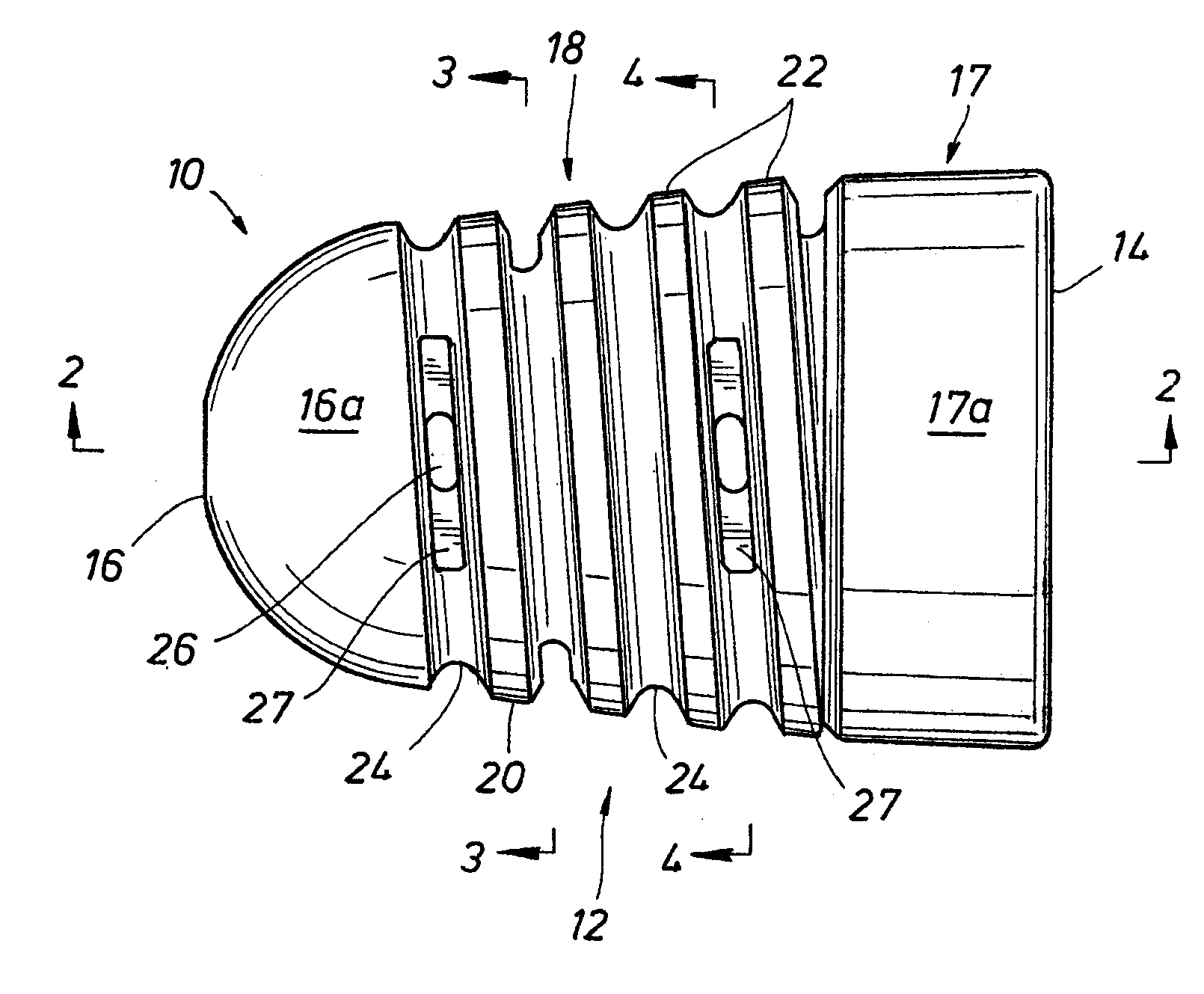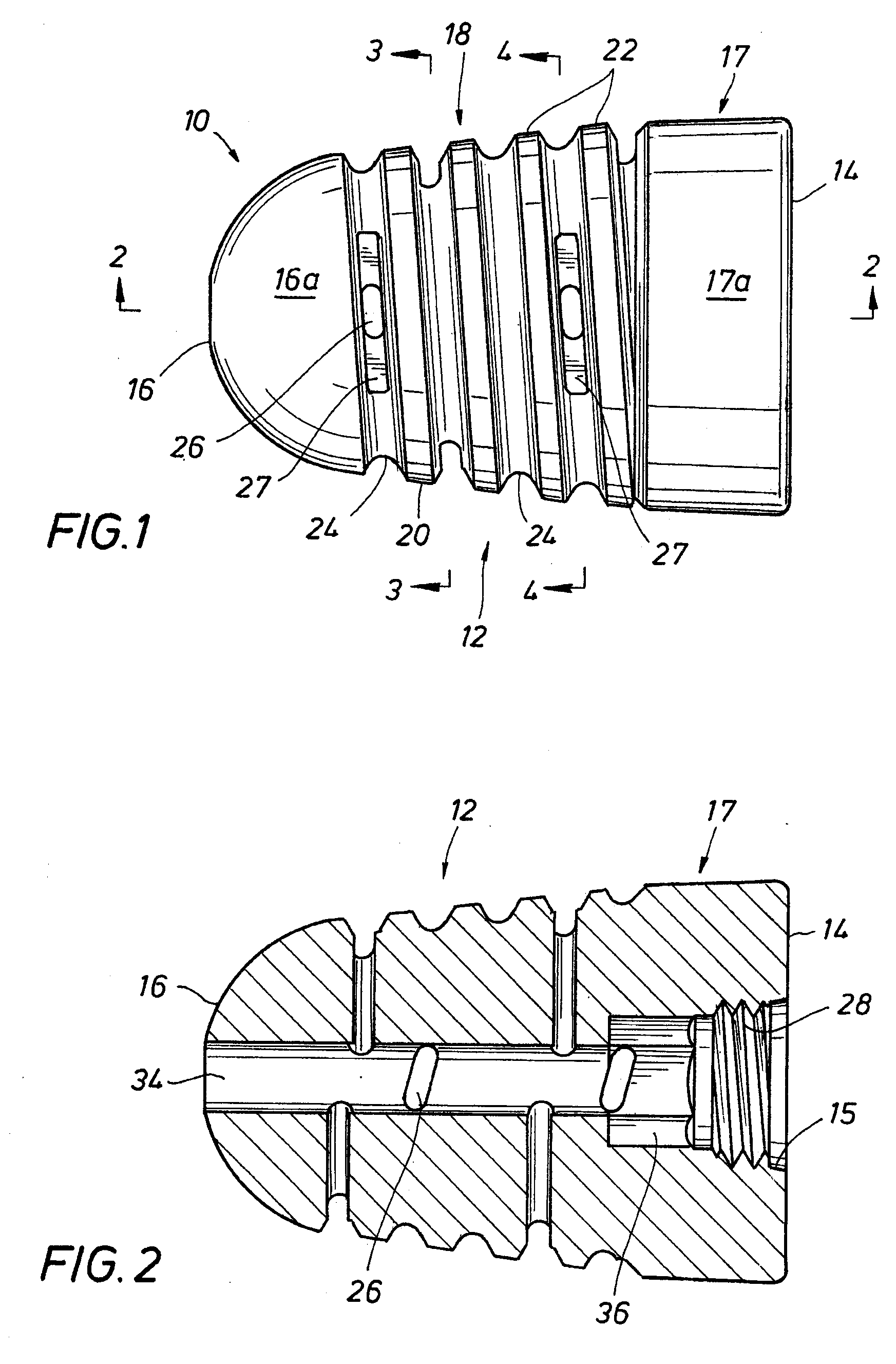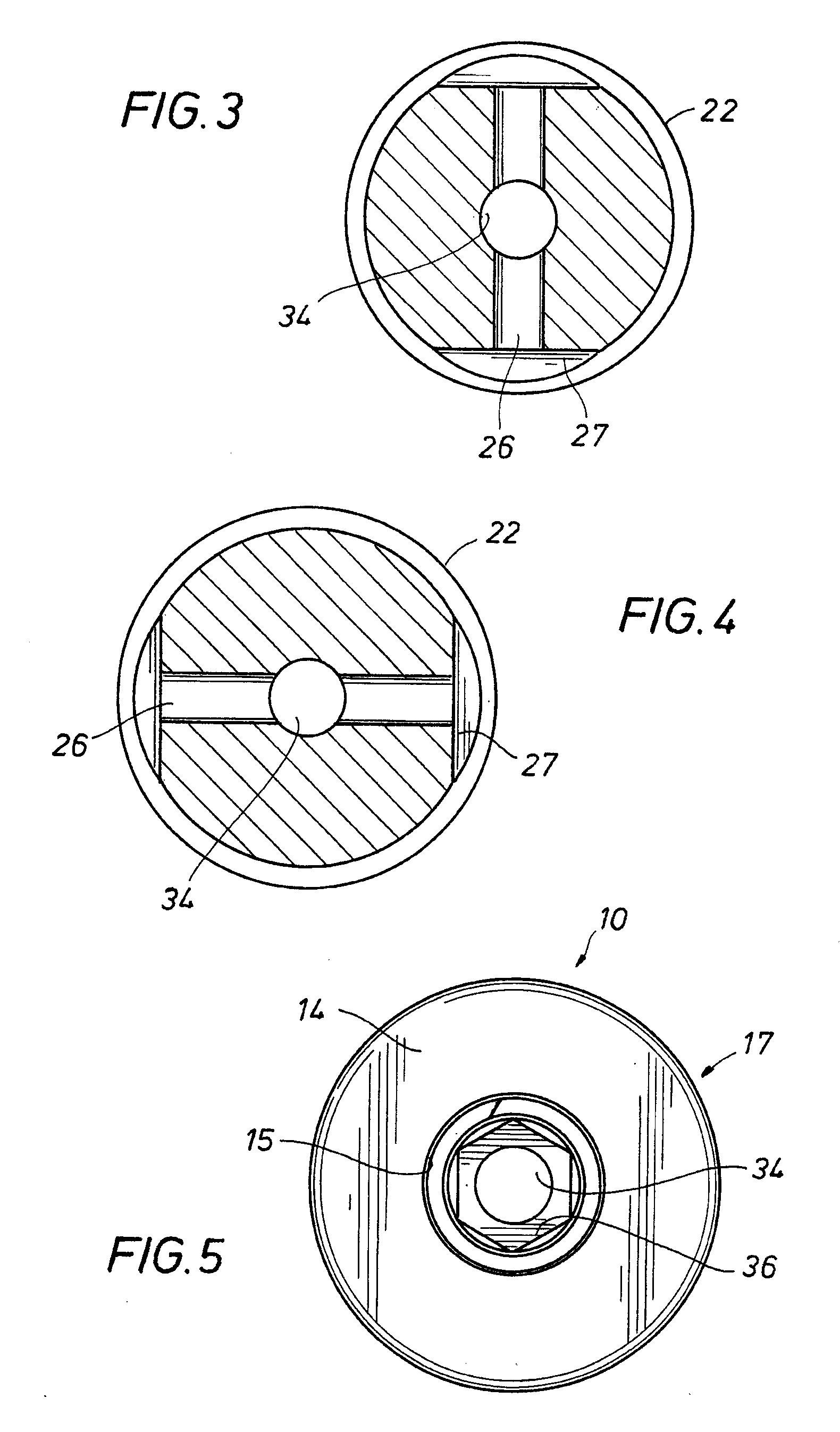Subtalar implant and kit
- Summary
- Abstract
- Description
- Claims
- Application Information
AI Technical Summary
Benefits of technology
Problems solved by technology
Method used
Image
Examples
Embodiment Construction
[0019]Referring first to FIG. 1, the implant, shown generally as 10, includes an elongate body 12 having a proximal end with a planar face 14 and a distal end 16 having a domed shape. As can be seen from FIG. 1, body 12 has a cylindrical portion 17 having a cylindrical surface 17a proximate the planar face 14 of the proximal end and a conical portion 18, conical portion 18 extending axially from the cylindrical portion 17 toward the domed shape portion 16a on the distal end 16 and being provided with tapered male threads 20 having frustoconical crests 22 and radiused roots 24. As can be seen with reference to FIGS. 1 and 2, apertures 26 are formed in grooves 27 in the roots 24 and extend through the body 12 and are in open communication with a bore 34 which extends from and through proximal end 14 to and through distal end 16. Grooves 27 and apertures 26 provide receptacles for post implantation osseous tissue growth to further stabilize the implant 10.
[0020]Bore 34 has a small, cha...
PUM
 Login to View More
Login to View More Abstract
Description
Claims
Application Information
 Login to View More
Login to View More - R&D
- Intellectual Property
- Life Sciences
- Materials
- Tech Scout
- Unparalleled Data Quality
- Higher Quality Content
- 60% Fewer Hallucinations
Browse by: Latest US Patents, China's latest patents, Technical Efficacy Thesaurus, Application Domain, Technology Topic, Popular Technical Reports.
© 2025 PatSnap. All rights reserved.Legal|Privacy policy|Modern Slavery Act Transparency Statement|Sitemap|About US| Contact US: help@patsnap.com



